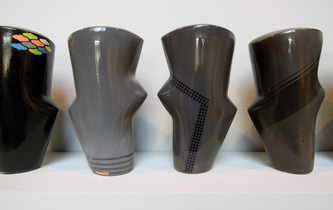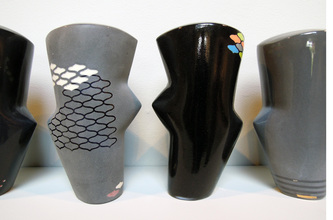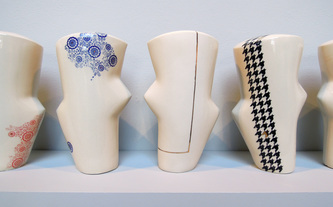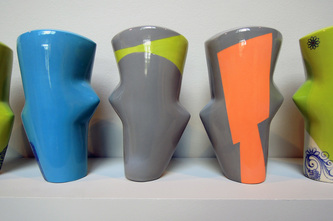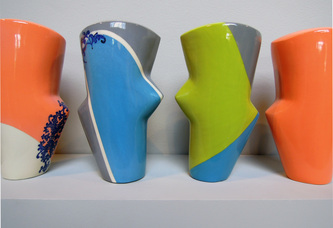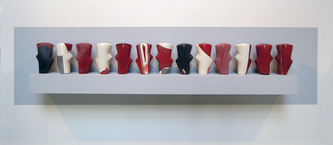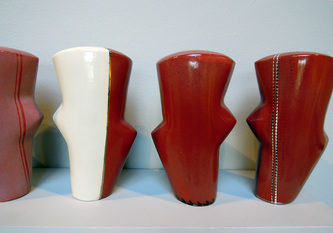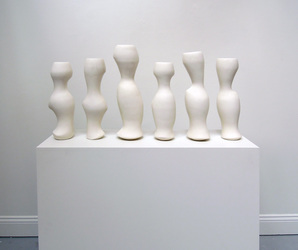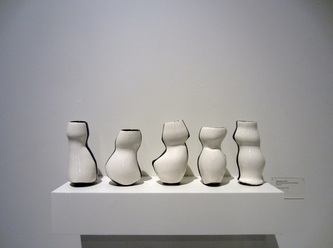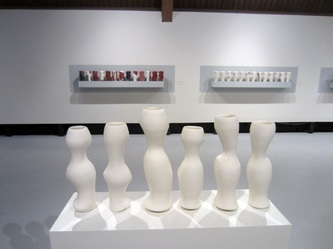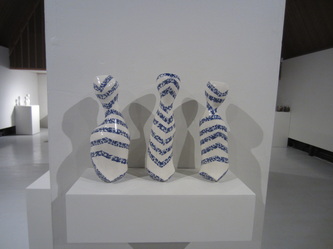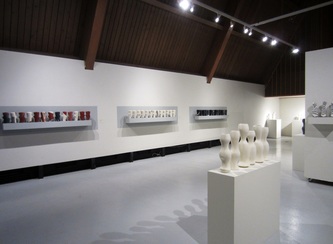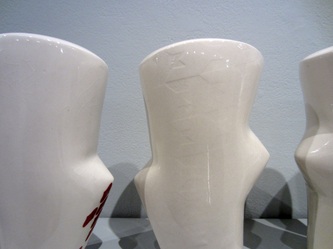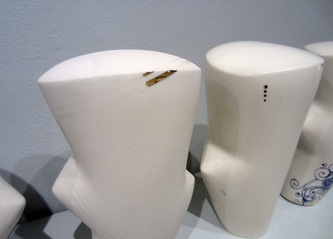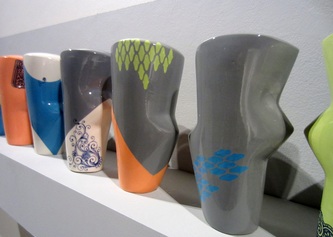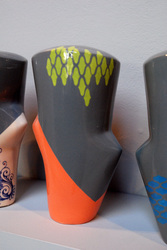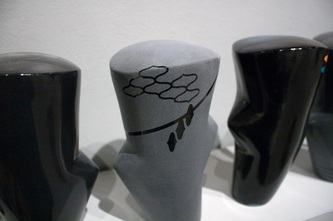BFA Thesis Exhibition 2012
.
It was in college when I discovered clay. I found myself enthralled with the ceramics studio: the materials science, the problem solving and most of all the artisan process. I began making utilitarian pottery with the determination to solidify a foundation for my craft in proper function while still concentrating on visually attractive forms and surfaces. I found the methods of the
medium not only soothing, but also gratifying. I was addicted.
Soon after I began experimenting more creatively, yet my love for the wheel kept me grounded to function. I found myself lingering somewhere between the practicality of pottery and the artistry of sculpture. I saw this dichotomy as a challenge waiting to be conquered. So I investigated: was it ever okay to create pottery with no other function than beauty?
My research brought me to the French porcelain of the 16th Century and a region called Sèvres. There, a porcelain factory produced beautifully crafted decorative pots. Inspired, I began altering thrown vessels in such a way that removed their utilitarian purpose. In this alteration I found my calling.
My forms became figurative and I became more intent on making silhouettes that referenced the female figure, with surface design inspired by the high fashion of the 1960s. I gravitated toward Dior, Balenciaga, and Chanel, particularly the timeless color blocking patterns and silhouettes of these great houses. Removed from the table, they were no longer individual pieces but sets
meant strictly for aesthetic pleasure. I refer to them as lines in homage to the haute couture that inspired them.
Fashion collections are created as vessels to translate beauty from designer to viewer. My body of work acts in the same way. My slip cast lines are categorized as RTW, or ready-to-wear – accessible pieces intended for mass consumption. My couture collections, much like their fashion industry counterparts, are one-of-a-kind, unique forms, thrown and altered off the wheel.
In both, movement is communicated between individual pieces, almost as if they were strutting down a runway. And while the form of my pieces remain abstract and simple, attention is consistently diverted toward the beauty of surface design – much like the fashion I so much admire.


